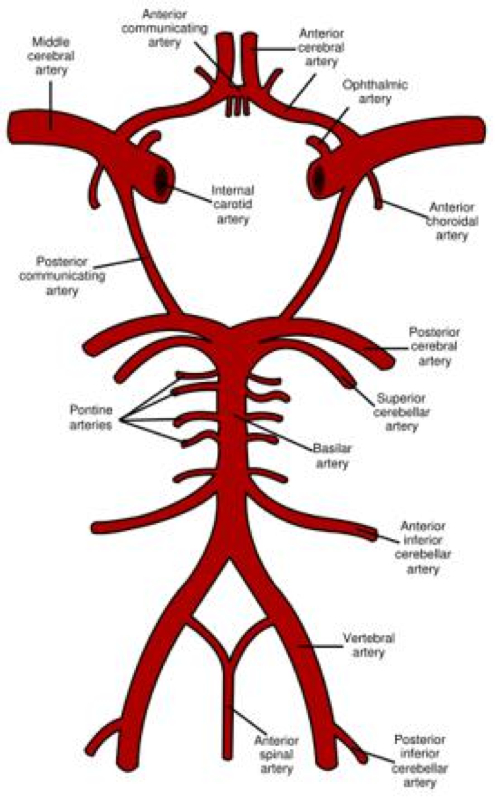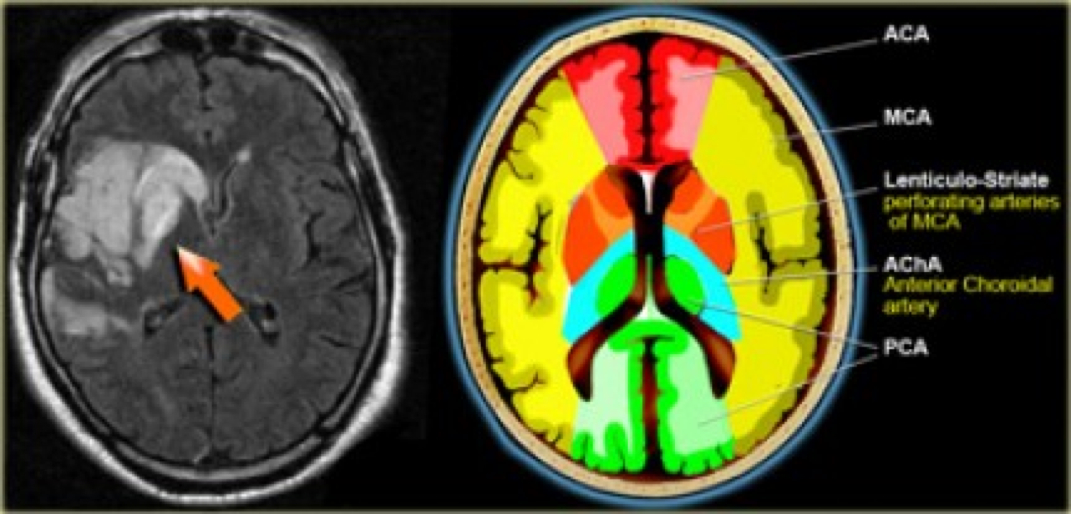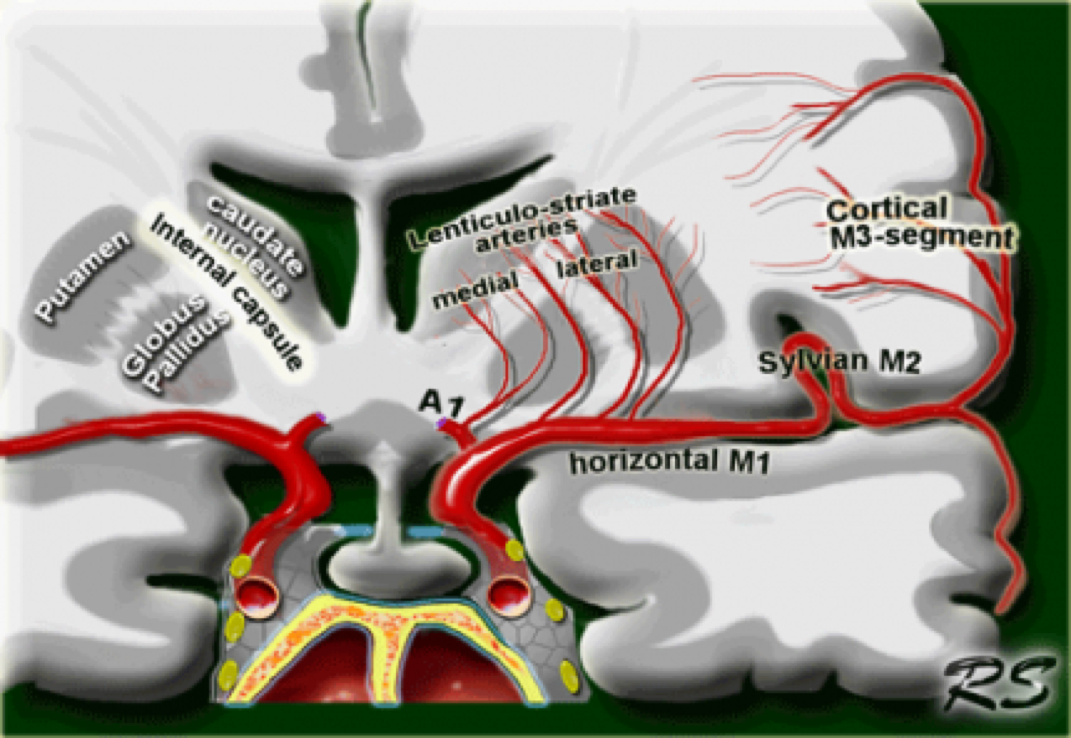The middle cerebral artery (MCA) is one of the three major paired arteries that supply blood to the brain. The MCA arises from the internal carotid artery (ICA) as the larger of the two main terminal branches (MCA and anterior cerebral artery) and continues into the lateral sulcus where is branches and provides many branches that supply the cerebral cortex.
Segments
The MCA is divided into M1, M2, M3 and M4 segments :
M1 : from the origin to bifurcation / trifurcation
M2 : from bi (tri) furcation to origin of cortical branches
M3 : opercular branches (those within the sylvian fissure)
M4 : branches emerging from the sylvian fissure onto the surface of the hemisphere
Branches
M1
medial lenticulostriate penetrating arteries
lateral lenticulostriate penetrating arteries
anterior temporal artery
polar temporal artery
uncal artery
M2
Division of the MCA is variable after the horizontal segment, although most commonly, it divides into two trunks : superior and inferior :
78 % bifurcate into superior and inferior divisions
12 % trifucate into superior, middle and inferior divisions
10 % branch into many smaller branches
Superior terminal branch
lateral frontobasal (orbito-frontal) artery
prefrontal sulcal artery
pre-Rolandic (precentral) and Rolandic (central) sulcal arteries
Inferior terminal branch
three temporal branches (anterior, middle, posterior)
branch to the angular gyrus
two parietal branches (anterior, posterior)
Supply
The middle cerebral arteries supply the majority of the lateral surface of the hemisphere apart from the superior portion of the parietal lobe and the inferior portion of the temporal lobe and occipital lobe. In addition, they supply part of the internal capsule and basal ganglia.
Variations
accessory MCA
The territory of the lateral lenticulo-striate perforating arteries of the MCA is indicated with a different color from the rest of the territory of the MCA because it is a well-defined area supplied by penetrating branches, which may be involved or spared in infarcts separately from the main cortical territory of the MCA.
On the left a T2W-image of a patient with an infarction in the territory of the middle cerebral artery (MCA).
Notice that the lateral lenticulo-striate perforating arteries of the MCA are also involved (orange arrow).
Medial lenticulostriate arteries
Branches of the A1-segment of the anterior cerebral artery.
They supply the anterior inferior parts of the basal nuclei and the anterior limb of the internal capsule.
Lateral lenticulostriate arteries
Branches of the horizontal M1-segment of the middle cerebral artery.
They supply the superior part of the head and the body of the caudate nucleus, most of the globus pallidus and putamen and the posterior limb of the internal capsule.



 RSS Feed
RSS Feed